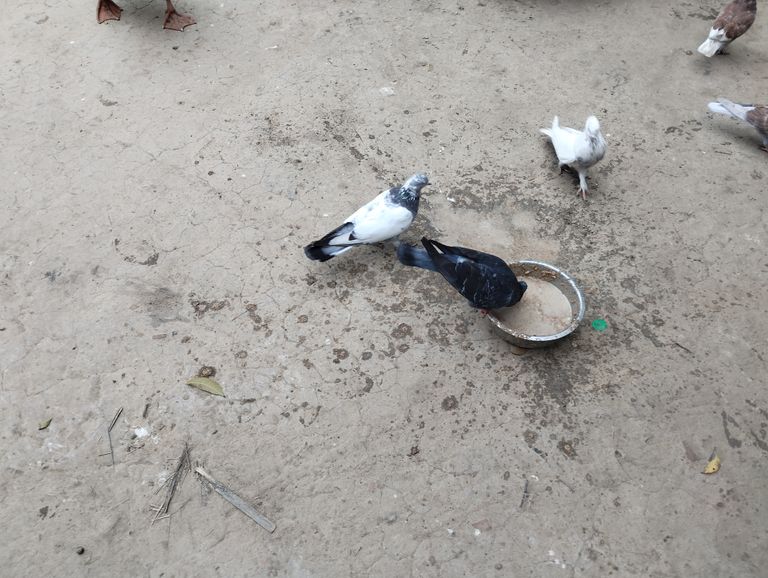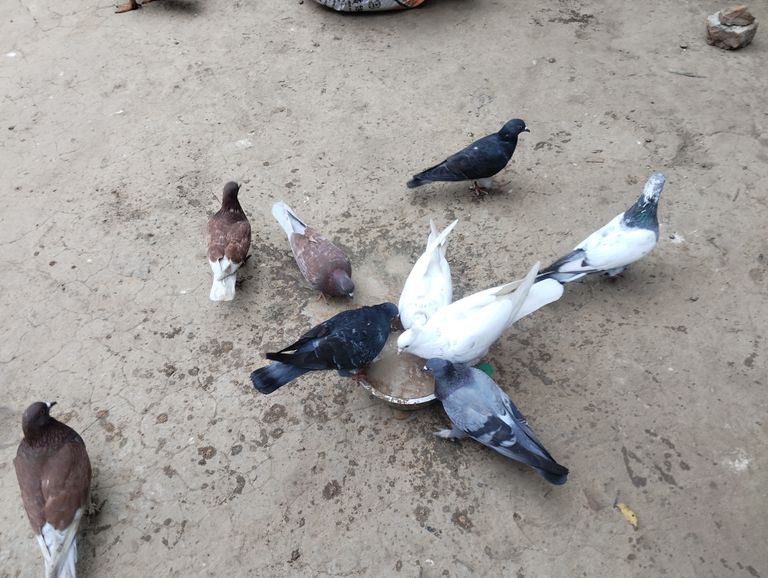
Hobbyist Pigeon Keeping A Guide to Raising and Enjoying Pigeons.
Pigeon keeping is a centuries-old hobby that has fascinated people around the world. Whether for companionship, sport, or aesthetics, raising pigeons can be a rewarding experience. In this blog, we will explore the joys of keeping pigeons, the benefits, types of pigeons, care tips, and how to get started as a hobbyist.
Why Keep Pigeons as a Hobby?
Pigeon keeping is more than just a pastime; it is a fulfilling activity that connects you with nature. Here are some reasons why people love raising pigeons:
Companionship: Pigeons are intelligent and can form bonds with their owners.
Relaxation: Watching pigeons fly and interact can be soothing and reduce stress.
Sport and Racing: Some hobbyists train pigeons for racing competitions.
Beauty and Aesthetics: Fancy breeds have unique feather patterns and colors.
Cultural and Historical Significance: Pigeons have been used for messaging, ceremonies, and symbols of peace for centuries.
Choosing the Right Pigeon Breed
Before starting your pigeon-keeping journey, it’s essential to choose the right breed based on your interests. Here are some popular pigeon breeds:
- Homing Pigeons – Best for pigeon racing; known for their ability to find their way home from long distances.
- Fantail Pigeons – Known for their elegant fan-shaped tails, often kept for beauty.
- Lahore Pigeons – Large, attractive pigeons with a calm nature.
- Jacobins – Distinctive feather formations around their neck make them stand out.
- King Pigeons – Large, meaty pigeons, often raised for their size.
Setting Up a Pigeon Loft
A proper pigeon loft (shelter) is crucial for the health and safety of your birds. Here’s what you need:
Space and Ventilation: A spacious, well-ventilated loft prevents overcrowding and disease.
Protection from Predators: Keep pigeons safe from cats, hawks, and other threats.
Nesting Areas: Provide clean and comfortable nesting boxes.
Perches and Roosting Areas: Pigeons need perches to rest and socialize.
Cleaning Routine: Regularly clean droppings, leftover food, and nesting materials.
Feeding and Nutrition
Proper nutrition is key to raising healthy pigeons. Their diet should include:
Grains and Seeds: Corn, wheat, millet, and peas are common pigeon food.
Pellets and Supplements: Commercial pigeon feed ensures balanced nutrition.
Fresh Water: Always provide clean water to keep pigeons hydrated.
Grit and Minerals: Helps with digestion and overall health.
Health Care and Disease Prevention
Pigeons are generally hardy birds, but they can suffer from diseases if not properly cared for. Some key health tips include:
Regular Checkups: Inspect pigeons for signs of illness, such as lethargy, ruffled feathers, or lack of appetite.
Vaccinations: Protect pigeons from diseases like Newcastle Disease and Paramyxovirus.
Parasite Control: Use anti-parasitic treatments to prevent mites and lice.
Quarantine New Birds: Before adding new pigeons to your loft, keep them separate for a few weeks to avoid spreading diseases.
Training and Flying Pigeons
If you want to train pigeons for flying or racing, follow these steps:
- Start Young: Young pigeons learn faster and adapt better.
- Gradual Release: Let them explore their surroundings before free-flying.
- Food-Based Training: Call them back to the loft using food rewards.
- Increase Distance: Slowly extend the distance they fly to improve navigation skills.
- Maintain a Routine: Train them at the same time daily for consistency.
Breeding Pigeons
Breeding pigeons can be an exciting part of the hobby. Here’s what you need to know:
Pair Selection: Choose healthy, strong birds for breeding.
Nesting Area: Provide a comfortable nest box for eggs and chicks.
Egg Care: Pigeons usually lay two eggs, which hatch in about 17-19 days.
Chick Feeding: Parent pigeons produce "crop milk" to feed young chicks.
Challenges of Pigeon Keeping
Like any hobby, pigeon keeping has its challenges:
Time Commitment: Requires daily feeding, cleaning, and monitoring.
Weather Conditions: Extreme heat or cold can affect pigeons' health.
Predators: Hawks, cats, and other animals can threaten pigeons.
Disease Outbreaks: Proper hygiene and vaccinations help prevent infections.
Pigeon keeping is a wonderful hobby that brings joy, relaxation, and even competitive excitement. With the right care, setup, and knowledge, you can enjoy raising pigeons and form a deep connection with these intelligent birds. Whether you are interested in fancy breeds, racing pigeons, or simply enjoying their presence, this hobby offers endless rewards. Are you planning to start your pigeon-keeping journey? Share your thoughts and experiences in the comments.
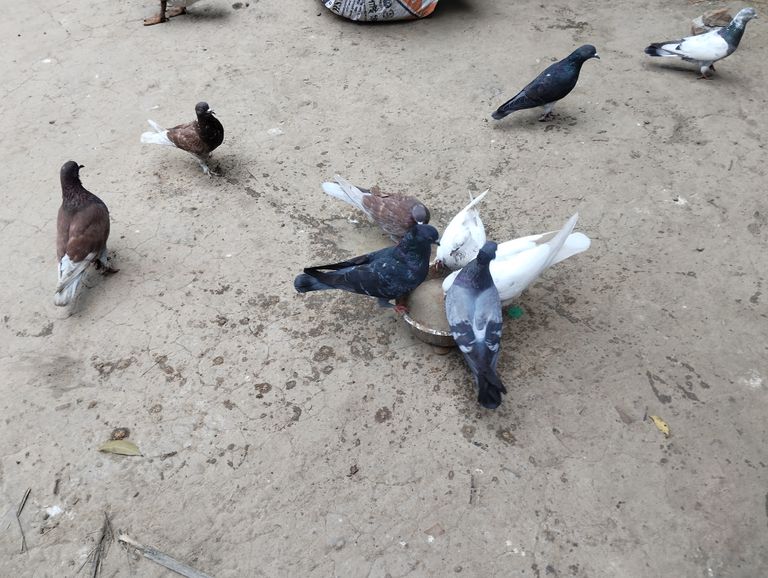
Pigeon Food: A Complete Guide to a Healthy Diet
Pigeons are fascinating birds that have been domesticated for centuries. Whether you keep them as pets, for racing, or as part of a breeding program, providing the right diet is essential for their health and well-being. In this guide, we will explore the best foods for pigeons, their nutritional needs, and how to maintain a balanced diet for these intelligent birds.
Understanding a Pigeon's Natural Diet
In the wild, pigeons primarily feed on:
Seeds (millet, sunflower, safflower, flax)
Grains (wheat, corn, rice, barley)
Fruits and Berries (apples, pears, blueberries, cherries)
Greens (lettuce, spinach, kale)
Insects and Worms (for protein intake)
Domestic pigeons require a similar diet, but with some modifications to meet their nutritional needs.
Essential Nutrients for Pigeons
A balanced diet must include:
- Carbohydrates
Carbohydrates provide pigeons with the energy needed for daily activities and flying. Grains like wheat, corn, and rice are excellent sources of carbohydrates.
- Proteins
Proteins help with muscle development, feather growth, and overall health. Peas, lentils, beans, and soybeans are rich in protein and should be part of their diet.
- Fats
Healthy fats keep pigeons warm and provide long-term energy. Sunflower seeds and flaxseeds are excellent sources of natural fats.
- Vitamins and Minerals
Vitamins and minerals boost the immune system and maintain strong bones. Greens, fruits, and mineral supplements are necessary to prevent deficiencies.
- Water
Fresh, clean water should always be available to prevent dehydration. Pigeons drink a lot, especially in hot weather.
Best Foods for Pigeons
Here are the best food options to keep your pigeon healthy:
- Seeds and Grains
Millet
Wheat
Barley
Corn
Rice
Oats
Sunflower seeds
- Protein Sources
Green peas
Lentils
Mung beans
Chickpeas
Soybeans
- Fruits and Vegetables
Apples
Pears
Bananas
Carrots
Spinach
Lettuce
- Calcium and Mineral Supplements
Crushed eggshells
Oyster shells
Cuttlefish bone
Grit
- Commercial Pigeon Feed
Many pigeon owners prefer commercial pigeon pellets as they contain a balanced mix of essential nutrients. Brands like Versele-Laga, Brown’s, and Hagen offer high-quality pigeon feed.
Foods to Avoid
Not all foods are safe for pigeons. Avoid these harmful foods:
Salty foods (can cause dehydration)
Sugary foods (bad for digestion)
Caffeine (toxic for birds)
Chocolate (contains theobromine, which is poisonous)
Avocado (contains persin, which is toxic to pigeons)
Feeding Schedule and Portion Control
Pigeons should be fed twice a day with proper portion control. Overfeeding can lead to obesity and health issues, while underfeeding may cause malnutrition. A typical adult pigeon eats about 30-50 grams of food per day.
Special Diets for Racing and Breeding Pigeons
- Racing Pigeons
Racing pigeons need high-energy food for endurance and speed. Their diet should include:
50% carbohydrates (corn, wheat, barley)
25% protein (peas, lentils, soybeans)
10% fat (sunflower seeds, flaxseeds)
15% vitamins and minerals
- Breeding Pigeons
Breeding pigeons require extra nutrients for egg production and chick development. Their diet should be high in:
Protein (30-35%)
Calcium (for strong eggshells)
Vitamins A, D, and E (for reproductive health)
Feeding pigeons the right diet ensures they remain active, strong, and healthy. A mix of seeds, grains, proteins, fruits, and vegetables will provide them with essential nutrients. Always provide fresh water and avoid harmful foods. Whether you keep pigeons as pets or for racing, proper nutrition is key to their well-being.
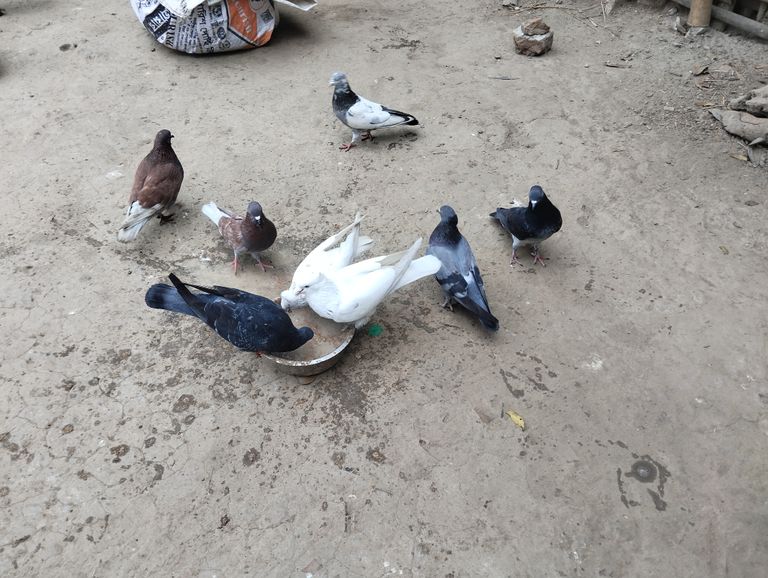
How to Build a Pigeon House: A Complete Guide
Pigeons are fascinating birds known for their intelligence, loyalty, and homing abilities. If you love pigeons and want to raise them, building a comfortable pigeon house (also called a loft) is essential. A well-designed pigeon house provides shelter, safety, and a healthy environment for breeding and flying pigeons. In this blog, we’ll guide you step by step on how to build a pigeon house, including design considerations, materials, and maintenance tips.
- Understanding the Needs of Pigeons
Before building a pigeon house, it is important to understand the needs of pigeons. Pigeons require:
Adequate space for flying and resting
Proper ventilation to maintain air quality
Protection from predators like cats, hawks, and rodents
A dry and clean environment to prevent diseases
Nesting boxes for breeding pairs
Easy access for feeding, cleaning, and maintenance
- Choosing the Right Location
The location of your pigeon house plays a crucial role in their health and safety. Consider these factors when choosing a place:
Elevated area: A higher place (like a rooftop or raised structure) keeps pigeons safe from predators.
Away from noise: Pigeons prefer a quiet environment. Avoid areas with heavy traffic or loud machinery.
Sunlight and shade: Ensure the loft gets natural sunlight but also has some shade to protect pigeons from extreme heat.
Wind protection: Avoid placing the loft in a location where strong winds directly hit it.
- Materials Needed for Building a Pigeon House
To build a strong and durable pigeon house, you will need:
Wood or plywood (for walls and flooring)
Wire mesh (for ventilation and predator protection)
Metal sheets or waterproof materials (for roofing)
Nails, screws, and hinges
Paint or waterproof coating (to protect against rain)
Plastic or wooden nesting boxes
- Designing the Pigeon House
A good pigeon house should have:
Sufficient space: Each pigeon needs at least 2-3 square feet of space.
Separate compartments: Divide the loft into sections for breeding, resting, and feeding.
Proper ventilation: Install wire mesh windows for airflow to prevent diseases.
Perches: Add wooden perches for pigeons to rest.
Easy access doors: Ensure that the loft has doors for cleaning and feeding.
Pigeon House Size Guide
- Step-by-Step Guide to Building a Pigeon House
Step 1: Build the Frame
Use wooden planks or metal frames to create a strong structure.
Ensure the loft is elevated at least 2-3 feet above the ground to prevent moisture and pests.
Step 2: Install the Walls and Roof
Attach wooden or plywood panels for the walls.
Leave spaces for ventilation windows covered with wire mesh.
Use a metal or waterproof sheet for the roof to prevent rainwater from entering.
Step 3: Create Nesting and Perching Areas
Add nesting boxes in a separate section for breeding pairs.
Attach wooden perches at different heights inside the loft.
Step 4: Install Doors and Cleaning Trays
Add a large door for easy access to cleaning and maintenance.
Place removable trays under perches to collect droppings and keep the loft clean.
Step 5: Paint and Waterproof the Loft
Apply non-toxic paint or waterproof coating to protect the wood from moisture and insects.
- Maintaining a Pigeon House
Once the pigeon house is built, regular maintenance is necessary to keep pigeons healthy.
Daily Tasks:
Provide fresh water and food.
Check for sick or injured pigeons.
Weekly Tasks:
Clean feeding trays and water bowls.
Remove droppings and old nesting materials.
Monthly Tasks:
Check for damaged wood or wire mesh and repair if necessary.
Disinfect the loft to prevent mites and bacteria.
- Best Practices for Keeping Pigeons Healthy
Provide a balanced diet: Give pigeons grains, seeds, and fresh greens.
Ensure clean water: Change water daily to prevent diseases.
Vaccinate pigeons: Protect against common pigeon diseases.
Avoid overcrowding: Too many pigeons in a small space can cause stress and infections.
Let them fly: If possible, allow pigeons to fly freely for exercise.
- Conclusion
Building a pigeon house is a rewarding experience for bird lovers. A well-designed loft ensures pigeons are safe, healthy, and happy. By following the steps outlined in this guide, you can create the perfect home for your pigeons. Regular maintenance and proper care will keep your pigeons thriving for years to come. Are you planning to build a pigeon house? Share your ideas and experiences in the comments below.
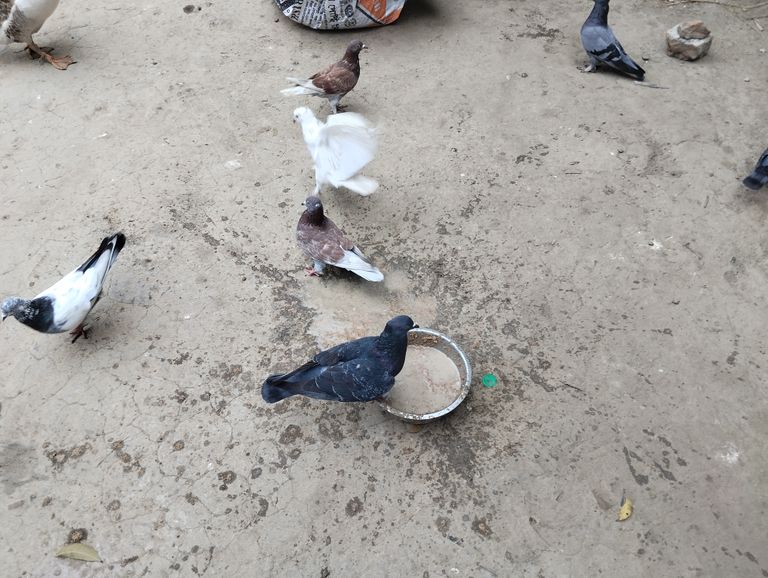
How to Take Care of Baby Pigeons: A Complete Guide
Raising a baby pigeon, also known as a squab, requires patience, knowledge, and care. Whether you’ve found an abandoned baby pigeon or are raising one from your pet birds, providing the right environment, diet, and medical attention is crucial for its survival and healthy growth. This guide will help you understand everything about caring for baby pigeons from birth to adulthood.
- Identifying the Age of a Baby Pigeon
Before you begin caring for a baby pigeon, it's important to determine its age. This will help you provide the right type of food and care.
0-3 Days Old: The chick is small, with closed eyes and yellowish down feathers.
4-7 Days Old: Eyes start to open, and pin feathers begin to appear.
1-2 Weeks Old: Feathers continue to develop, and the baby pigeon becomes more active.
3-4 Weeks Old: Fully feathered and starting to move around more independently.
4-6 Weeks Old: Ready to start eating on its own and learning to fly.
- Providing the Right Environment
Baby pigeons need a warm, safe, and comfortable environment. Here’s how to set up the perfect habitat:
Warmth: Keep the baby pigeon in a warm space with a temperature of 35-37°C (95-98°F) during the first few days. You can use a heating pad, heat lamp, or warm water bottle wrapped in a towel.
Nest Setup: Use a soft towel or tissue-lined box to mimic a nest. Make sure the area is clean and dry.
Safety: Keep the nest away from predators, loud noises, and direct sunlight.
- Feeding a Baby Pigeon
Pigeon parents usually feed their young with "crop milk," a nutrient-rich secretion. If you’re hand-rearing a baby pigeon, you’ll need a substitute.
Feeding for Different Age Groups
0-7 Days: Feed commercial pigeon formula (like Kaytee Exact Hand Feeding Formula) using a syringe with a soft rubber tip. The food should be warm but not hot. Feed every 2-3 hours.
1-2 Weeks: Continue formula feeding but increase the amount. Feed every 4-5 hours.
2-3 Weeks: Introduce softened seeds and grains along with formula. Reduce feeding to 3 times a day.
4-6 Weeks: Transition to solid food like grains, seeds, and pigeon pellets. By six weeks, the pigeon should be eating on its own.
Important Feeding Tips
Always ensure food is at a safe temperature (about 40°C or 104°F).
Avoid force-feeding. Let the pigeon eat at its own pace.
Clean the feeding tools after every use to prevent infections.
Keep the baby pigeon hydrated by offering clean water after three weeks of age.
- Hygiene and Health Care
A clean environment is crucial for a baby pigeon’s health.
Cleaning: Change the nest lining daily and keep the pigeon’s body clean with a warm damp cloth if needed.
Checking for Illness: Look for symptoms like lethargy, diarrhea, or breathing problems. If you notice any, consult a vet.
Parasite Control: Regularly check for mites or lice and consult a vet for appropriate treatments.
- Encouraging Independent Eating and Flight
By four weeks, baby pigeons start to peck at food. Place a shallow dish of seeds, grains, and water in their enclosure. Encourage them to eat by gently guiding them towards the food.
At about six weeks, they will begin flapping their wings and attempting short flights. Provide a safe, open space where they can practice flying.
- Socialization and Bonding
If you're hand-raising a pigeon, it will bond with you. Handle the bird gently and talk to it to help it feel secure. However, if you plan to release it into the wild, minimize human contact to encourage natural behaviors.
- When to Release a Baby Pigeon
If you’re raising a wild pigeon, it should be ready for release by 6-8 weeks. Ensure the pigeon can eat and fly well before letting it go. Release it in a safe area with access to food, water, and shelter.
Caring for a baby pigeon is a rewarding experience that requires dedication. By providing warmth, proper nutrition, and a safe environment, you can help the pigeon grow into a healthy adult. Whether you’re keeping it as a pet or preparing it for release, following these guidelines will ensure its well-being. Would you like additional details on any specific aspect of pigeon care.
